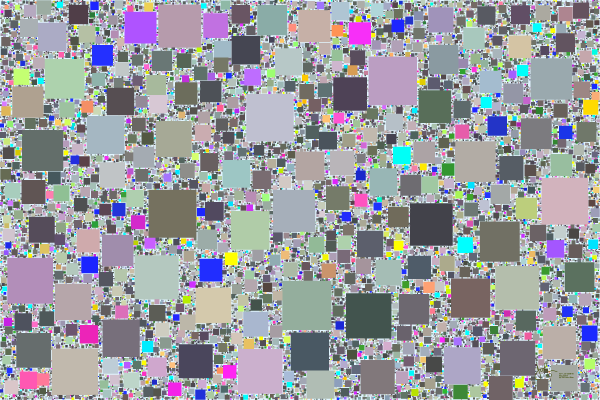
For the artist's description and comments, scroll down.

A sequence of steadily-smaller squares is placed within the drawing, such that each new square goes into one of the interstitial places between previous squares.
I have long been a fan of Jackson Pollock. This image shows how I think the color schemes of his drip art would look when applied to this pattern. I call it "faux Pollock".
What is viewed as good about Pollock is the "action" captured in his painting. In short, Pollock exemplifies the artistic virtue of "spontaneity". Spontaneity is when you perceive something unexpected. My own work shows "randomness". Randomness is when you perceive something unexpected. What, then, is the difference between randomness and spontaneity?
The original has about 16000 squares, all fully resolved. This image has been compressed for internet use and the resolution is much less.
To return to the previous page click the browser BACK arrow.